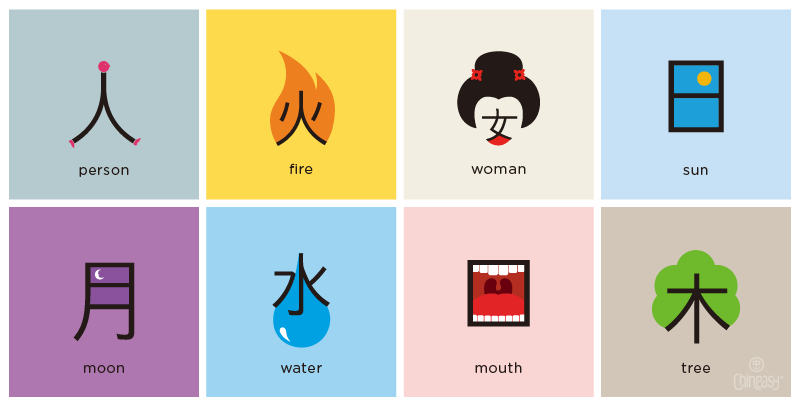Is learning Chinese hard? For many with no experience in the language, the answer might be a resounding “yes.”
But it doesn’t have to be!
In this post, we’ll dismantle ten common myths non-native speakers often hold about learning Chinese.
Understanding these misconceptions will not only correct your perspective but also dissolve the mental barriers you might have when approaching this fascinating language.
Myth 1: Chinese is the hardest language in the world
A popular measure for language learning difficulty comes from the Foreign Service Institute (FSI). They’ve estimated the time it takes to reach general proficiency in various languages.
In their list, languages are divided into four groups. Mandarin Chinese is in the 4th group, which demands the most study time: roughly 88 weeks or 1.6 years.
For comparison, languages in the first group need about 24-30 weeks of study; the second group requires 36 weeks, and the third, 44 weeks.
At first glance, these numbers might lead people to think that Chinese is the hardest language to learn.
However, it’s important to remember that learning difficulty can be very personal. It often depends on your native language and any other languages you might already know.
For example, if your mother tongue is an East Asian language like Korean or Japanese, you may find many similarities with Mandarin Chinese.
Both Korean and Japanese use some similar basic sentence structures to Chinese and even share some Chinese characters in their writing systems.
So, for speakers of these languages, learning Mandarin could be easier than learning a European language like French or Spanish.
On the other hand, if your native language is a European one, you might find it easier to learn other European languages due to similar grammar, vocabulary, and sentence structure.
In this case, Mandarin Chinese might seem more challenging due to the differences in these areas.
So, the difficulty of a language can depend largely on what languages you’re already familiar with.
It’s not that Chinese is the hardest language for everyone—it could just be more challenging for some people based on their linguistic background.
Myth 2: Chinese has tens of thousands of characters to memorize
The thought of memorizing thousands of Chinese characters can seem overwhelming, but don’t let this intimidate you.
The reality is, you don’t need to master an astronomical number of characters to understand everyday Chinese publications.
When it comes to learning Chinese characters, adopting a systematic approach can be incredibly helpful.
For instance, studying common components or Chinese radicals, also known as bushou (部首; bù shǒu), can assist you in recognizing patterns and understanding new characters more easily.

The Chinese government has curated a list known as the “Table of General Standard Chinese Characters” (通用汉字表; tōng yòng hàn zì biǎo). This catalog breaks down 8100 characters into three distinct levels.
The first level, referred to as the “essential characters,” comprises 3500 characters. These are the characters that Chinese schoolchildren are typically expected to master before graduating from high school.
The encouraging news for you, as a Chinese learner, is that you don’t have to learn all 3500 characters!
If you manage to learn just 1000 of them, you’ll be able to comprehend approximately 89% of the content in common publications like newspapers, magazines, and novels.
Moreover, to pass Level 3 of the Hanyu Shuiping Kaoshi (HSK) – an international standardized exam that tests Chinese language proficiency–you only need to be familiar with about 615 characters.
That’s significantly less than tens of thousands! So, remember: there’s no need to feel overwhelmed.
The journey of learning Chinese characters is a step-by-step process; every new character you learn brings you one step closer to achieving fluency.
Myth 3: Chinese tones are hard
Many learners find the concept of Chinese tones as challenging as mastering Chinese characters.
If your native language doesn’t use tonal differences to convey meaning, this aspect of Chinese might seem quite daunting.
But this doesn’t mean mastering Chinese tones is an impossible task.
 In fact, you might already be using tones intuitively in your native language without realizing it.
In fact, you might already be using tones intuitively in your native language without realizing it.
Let’s consider English as an example. English speakers use tone to convey emotions and emphasis rather than to differentiate word meanings like in Chinese.
When English speakers are excited, they tend to raise their pitch at the end of the sentence. This is similar to the rising tone (or second tone) in Chinese.
Contrarily, English speakers often use a falling intonation when expressing low-energy emotions like boredom or disappointment. This is similar to the falling (or fourth tone) in Mandarin.
So, if you’re already using these intonations naturally in English, you can apply them to Mandarin Chinese with some training.
The key is careful listening and regular practice. You’ll find they become much more manageable as you become more attuned to the tones and practice them in context.
Myth 4: Chinese grammar is incredibly complex
You might be holding back from learning Chinese, thinking its grammar must be complex.
After all, if the characters and tones are as foreign as they say, wouldn’t the grammar be equally challenging? Well, not necessarily!
Every language has its own set of straightforward and more complex grammatical structures, and Chinese is no exception.
At a beginner level, Chinese sentence structure is similar to English’s subject + verb + object (SVO) pattern.
Chinese verbs remain consistent – no tense changes, no conjugation – a relief for those familiar with the intricacies of verb forms in many European languages!
Additionally, Chinese does not differentiate between masculine and feminine nouns, further simplifying things for learners.
That said, some grammatical aspects in Chinese, like measure words or the particles 了 and 把, do take time to master.
In the grand scheme of things, these complexities should not deter you from learning Chinese.
The more you immerse yourself in the language, the more these initially complex-seeming grammatical points will start to make sense.
It’s all about exposure and practice. As with any skill, repetition and real-world usage can enhance your understanding.
Myth 5: I don’t have anyone to practice Chinese with
The saying goes, “practice makes perfect,” but what if you lack friends or acquaintances with whom you can practice your Chinese?
Fret not. Where there’s a will, there’s a way!
Chinese-speaking communities aren’t a rarity, particularly if you live in a large city or densely populated area.
Consider tapping into these resources: seek out a language exchange partner from your local Chinese community or perhaps befriend Chinese native speakers at your school.
If the face-to-face conversation seems intimidating, try out your language skills in casual settings.
Why not greet your local Chinese takeaway staff with a friendly 你好 (nǐ hǎo; hello), place your order using 我要點/我要点 (wǒ yào diǎn; I’d like to order), and show your appreciation with a 謝謝/谢谢 (xiè xie, thank you)?
The more you actively use the language in your everyday life, the more your confidence will grow.
Furthermore, the online world provides plenty of opportunities for language practice.
Participate in online language exchange communities or start your journey with a learning app or an online tutor who can guide you through the language in a structured and engaging way.
Remember, consistency is key. Regular in-person or online practices will ensure steady progress on your language-learning journey.
In conclusion, learning Chinese may seem daunting, but once you crack these myths, you’ll realize it’s easier than it’s often portrayed.
Whether it’s the fear of the language’s complexity, grappling with tones and characters, or the lack of practice opportunities, remember that these myths can be overcome with the right mindset and approach.
Every expert was once a beginner. Keep practising, stay curious, and soon enough, you’ll find yourself communicating in Chinese with confidence.



